Each person's physique and physical condition are different, so the amount of heat and sweat emitted by the body during sauna sessions varies, resulting in different sauna effects for individuals. This article will discuss the reasons why saunas cause sweating and what factors can cause excessive sweating
Reasons for sweating more in saunas
1. Different Physiques:
Everyone has a different physique, which affects their tolerance to temperature. Some individuals may tolerate high temperatures without sweating much, while others may sweat profusely even with a slight increase in temperature, depending on their physique.
2. Metabolism:
Each person's metabolism is different, and it affects the amount of sweat produced by the body. If metabolism is high, the body tends to generate more heat and convert it into sweat.
3. Body Weight:
Body weight and body fat percentage also influence the amount of sweat. Generally, individuals with higher body weight or body fat content sweat more compared to those with lower body weight.
4. Cardiovascular System:
The health of the cardiovascular system also affects sweat production. Individuals with a healthier cardiovascular system are more likely to promote blood circulation, thereby increasing the activity of sweat glands and promoting profuse sweating.
5. Personal Habits:
Irregular eating habits and lifestyle choices can lead to increased sweating during sauna sessions. Irregular eating and lack of exercise can weaken the body, making it more prone to sweating profusely in high-temperature environments.
6. Environmental Factors:
Environmental factors in the sauna room also affect sweating. If you sweat more than others during sauna sessions, it may be because the temperature in your sauna room is higher. Or perhaps the temperature distribution inside the sauna room is uneven, with the area where you are staying being slightly warmer.
Overall, the amount of sweat produced by each person during sauna sessions varies greatly due to various factors related to the body and external environment. Moderate sweating has many benefits for the body. If excessive sweating occurs, you can try lowering the sauna room temperature or adjusting personal lifestyle habits.
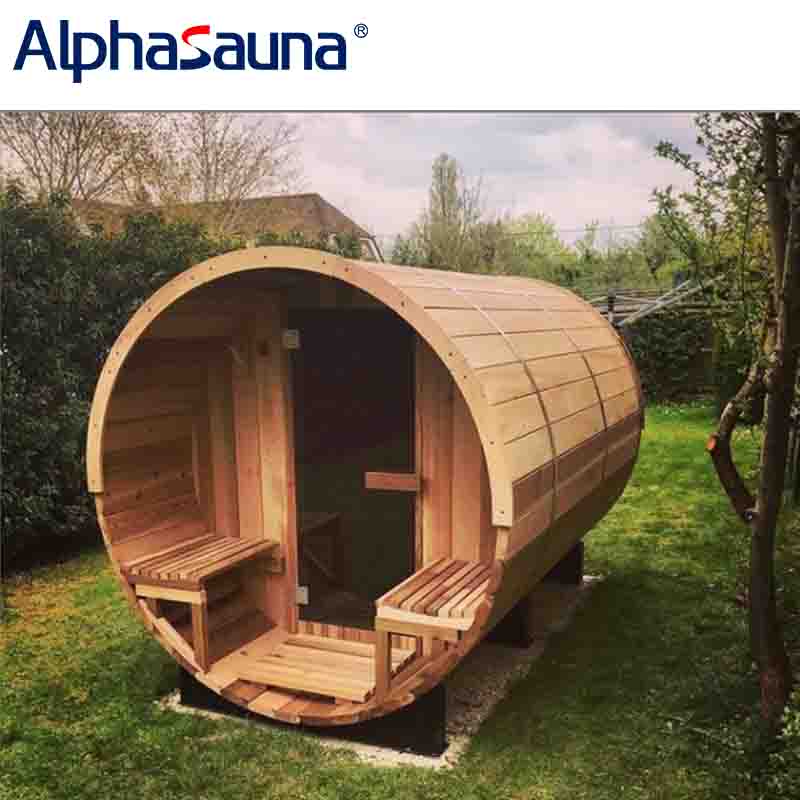
By placing a thermometer in the sauna room, one can monitor the current temperature and make adjustments as needed to prevent excessive or insufficient sweating due to excessively high or low temperatures. There are several types of sauna thermometers available:
1. Traditional Thermometer:
Traditional thermometers typically consist of a glass tube filled with a certain amount of mercury or alcohol, which is usually directly suspended inside the sauna room.
2. Digital Thermometer:
This type of thermometer measures temperature using electronic sensors and displays the reading on a digital screen. Digital thermometers are generally more accurate and provide users with more precise temperature readings.
3. Paper Strip Thermometer:
Paper strip thermometers are typically adhered directly to the wall and indicate the approximate temperature inside the sauna room through color changes on the strip. They are convenient to use.Different types of sauna thermometers have varying effectiveness; some can accurately display the sauna room temperature, while others can only provide approximate readings. Regardless of the type chosen, it is important to ensure that the sauna thermometer meets safety standards for reliable use."
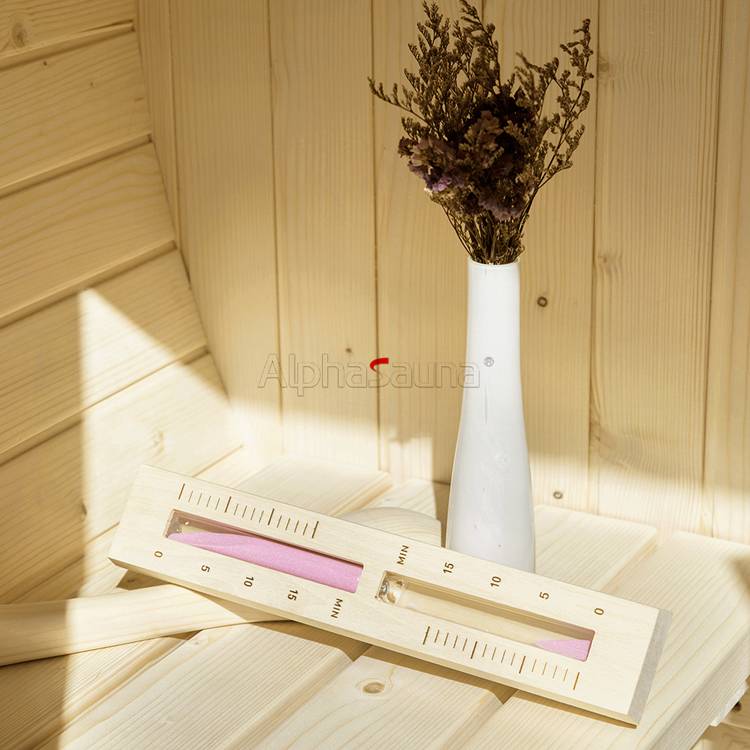
Why Don't I Sweat In The Sauna?
"Some individuals sweat more than others when in a sauna, while others may not sweat at all. Several factors can lead to not sweating in the sauna:
1. Dehydration:
If one does not adequately hydrate before entering the sauna, the body may lack the necessary moisture to sweat. Therefore, it is important to hydrate properly beforehand to ensure sufficient fluid levels for sweating.
2. Fluid Loss:
In the high-temperature environment of the sauna, the body regulates its temperature by sweating, which can lead to a decrease in sweat production and expulsion due to fluid loss.
3. Adaptation:
Some individuals may not yet be accustomed to high temperatures and may require more time to acclimate before sweating occurs.
4. Health Conditions:
If one does not sweat in the sauna, it could indicate an issue with the body's functions, affecting sweat production in the sauna.
5. Environmental Factors:
If the temperature and humidity in the sauna are not sufficiently high, or if the air circulation is too strong, it may prevent sweating during sauna sessions.
Overall, not sweating in the sauna is generally considered abnormal, and it is advisable to consult a doctor to determine the underlying cause. If feeling unwellduring sauna sessions, it is important to leave the sauna immediately and rest in a comfortable, well-ventilated area. It is also important to hydrate before and after sauna sessions to ensure the best sauna experience and effects."
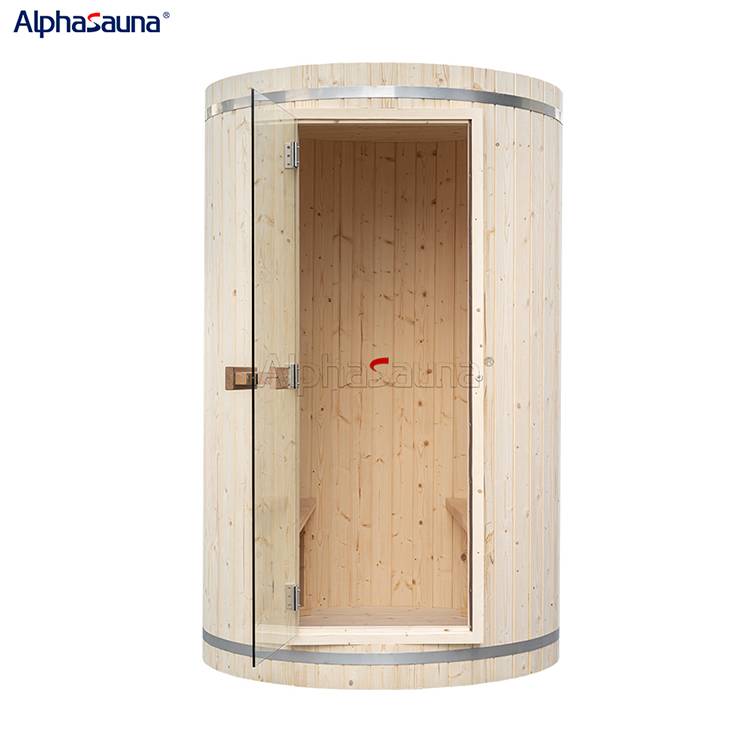
How To Sweat More In A Sauna?
Sweating profusely in the sauna has many benefits for the body, but it's also important to avoid excessive sweating. Here are some methods to help you sweat more in the sauna:
1. Hydrate Properly:
It's important to hydrate before and after sauna sessions to ensure sufficient fluid levels for sweating. Ample hydration also helps you sweat more in the sauna while avoiding dehydration.
2. Increase Temperature:
Start by lowering the temperature slightly, allowing your body to gradually adjust to the sauna's heat before raising the
temperature to increase internal body heat and sweating.
3. Increase Humidity:
Increasing humidity aids in increasing sweat production. The higher the humidity, the more sweat is expelled.
4. Moderate Exercise:
Engage in slow and gentle aerobic activities in the sauna to stimulate sweat glands and promote sweat production.
5. Monitor Body Condition:
Pay attention to changes in your body while in the sauna. If you experience dizziness, nausea, or any other symptoms, leave the sauna immediately and rehydrate.
Overall, sauna effects vary for each individual, and excessive sweating is not necessary. Moderate sweating can provide many benefits, such as improving blood circulation, relaxing the body, relieving muscle pain, reducing stress, and cleansing the skin.
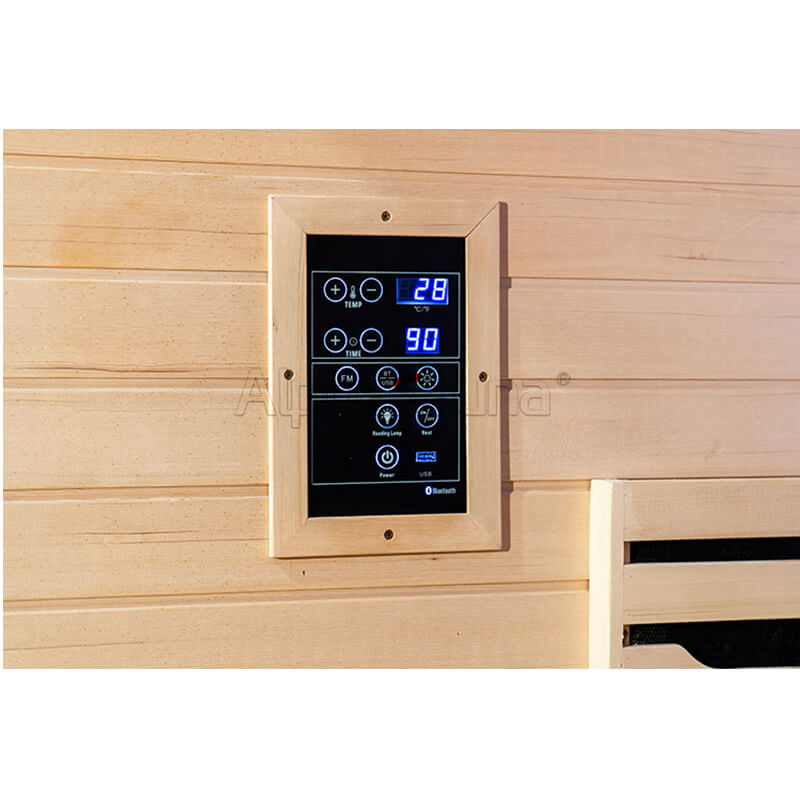
An outdoor traditional 3-person sauna is a sauna room built outdoors, typically constructed using wooden materials and designed to accommodate three individuals. The characteristics of an outdoor traditional 3-person sauna include:
1. Comfortable Environment:
Outdoor saunas have spacious areas and can be placed in locations like gardens, integrating seamlessly with nature to enhance
the sauna experience.
2. Wooden Materials:
Wood materials provide excellent insulation, effectively maintaining a consistent temperature inside the sauna. Additionally, wood adds aesthetic appeal to the sauna. Common types of wood include pine, cedar, heat-treated wood, cedarwood, and fir.
3. Adequate Space:
Outdoor traditional 3-person saunas typically provide enough space for three individuals to sauna comfortably. The layout inside the sauna is usually tidy, with seating available to ensure everyone can enjoy the sauna comfortably.
4. Heating Equipment:
These saunas are typically equipped with heating devices to raise and regulate the temperature inside. Common sauna heating equipment includes sauna stones, wooden sauna stoves, and some use wood burning to heat the sauna stones and air.
5. Social Aspect:
Outdoor saunas serve as social gathering places where people can interact, bond, and have conversations while enjoying the sauna experience together.
Overall, outdoor traditional 3-person saunas offer a comfortable sauna experience, allowing people to fully enjoy the pleasures of sauna bathing."
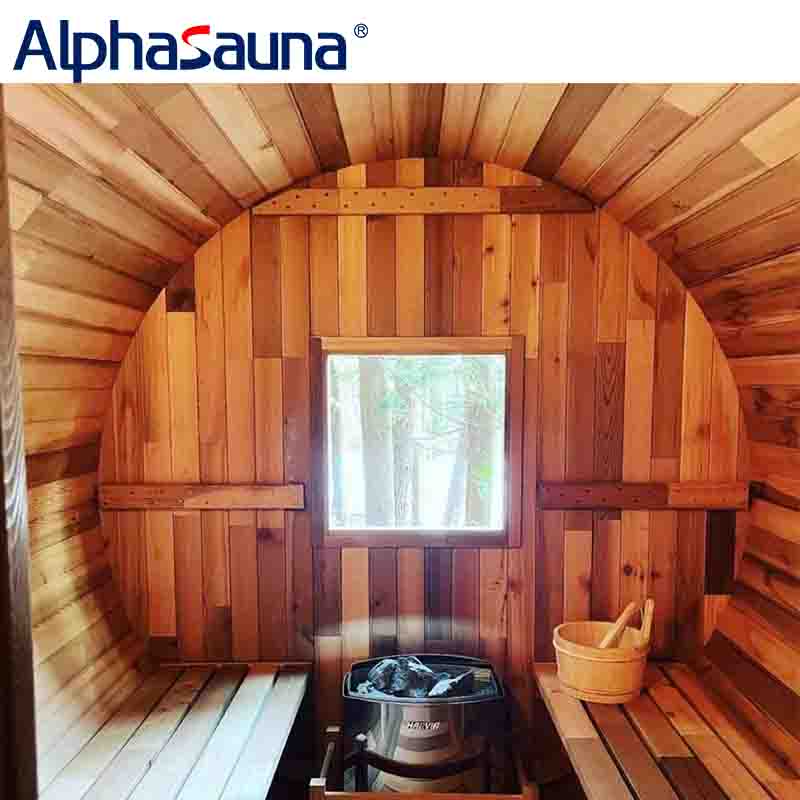
For Alphasauna
"There are many benefits to sauna bathing, such as promoting blood circulation, relieving stress, reducing fatigue, relaxing the body and mind, and cleansing
the skin. An outdoor traditional 3-person sauna provides a natural sauna experience and an opportunity to meet new sauna buddies. It allows people to relax
and promote overall well-being in an outdoor setting. Alphasaunas specializes in creating personalized sauna rooms for our customers. Our sauna facilities are
fully equipped, with guaranteed quality and crafted from premium wood and unique design styles, all aimed at providing customers with a distinctive sauna
experience. If you are interested in saunas, you can visit our official website to view and choose the sauna room that best suits you."






